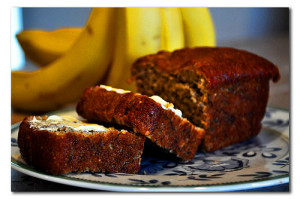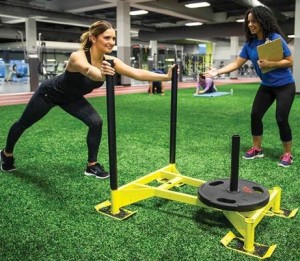by Michelle Sutton-Kerchner
Spring inspires us to air out and clean up. Don’t be limited to tidying your environment. Take steps for cleaner living through better health …
Clean Your Plate
The old saying takes on new meaning. Eating clean translates into retraining yourself to better enjoy the healthiest food choices. Think of it as getting back to the basics: more vegetables and fruits, better protein choices, and reduced fats.

Focus on eating closer to the earth, and further away from the manufactured. Processed foods can be seasoned with chemicals, excess salt, and hidden sugars. They sometimes are refined to the point of losing nutritional value and gaining ingredients that pollute the body. Eating clean delivers more fuel and less junk. So, clean your plate by filling it with foods worthy of your body.
Think Outside the Box
Limit packaged foods. Food stuff sealed in boxes, bags, and cans often are processed and contain preservatives to keep them fresh. Manufacturers increase shelf-life by using excess sodium and other unhealthy tricks. Read ingredient labels. Nutritionists suggest avoiding foods that contain a long list of ingredients, especially unpronounceable ones. Ingredients are listed from most used to least. For your best options, any added sugars and sodium should come at the end of a short list.
With that in mind, we also must acknowledge manufacturers’ trending efforts. They recognize today’s savvy consumers are more aware of nutrition’s impact on everything from their long-term health to everyday performance. Many grocery stores have specific aisles for foods to satisfy this growing market. A few years ago, it was challenging to find a selection specific to shoppers in need of organic, gluten-free, high-fructose free, or other special requirements. Today, you can find entire stores dedicated to this growing population.
Fresh Is Sweet
Fresh produce, especially choices in season locally, arrive straight from the farm. This unprocessed choice is loaded with vitamins, minerals, and natural flavor. Pile your plate with them. Load them into baggies for snacks. Adults should aim for 2.5 to 3 cups of veggies daily.
Be sure to wash produce well. Some prefer organic produce to assure it was grown in a healthy environment. You may wish to splurge for organic when buying produce typically high in pesticide contamination. The most popular of these include apples, strawberries, imported grapes, celery, and pears.
Sugar is a weakness for many. Try getting your fix from fresh fruit. If you crave a crunchy cookie, enjoy fruit with granola; ice cream, add fruit to plain yogurt; chocolate, dip it. The American Heart Association recommends a limit of six teaspoons of sugar daily for women and nine teaspoons daily for men. High sugar counts may show up in unexpected places. Culprits include yogurt, jarred sauces and salsas, and frozen entrees.
For a treat, visit the bakery. If you are used to eating processed carbs, such as packaged donuts and cakes, you immediately will notice a difference in their freshly prepared versions. Often less sugar is used in fresh-baked goods because it is not needed to preserve freshness during shelf-life. (Extra sugar can be used as a preservative.) Bakery treats usually contain less artificial flavorings. You taste more of the real food, not the sugar coating.
Easy Food Swaps
A clean diet is one low in saturated fats. Reduce use of butter, whole milk and cheeses, and meat when preparing meals. Instead use olive oil, low-fat dressings and spreads, and low-fat cheeses shredded for light sprinkling. Challenge yourself with a meatless meal at least once a week. Replace with heart-healthy protein choices like beans and certain fish.

Kick the carbs, or at least give them a nudge to the back of the pantry. Replace the refined grains found in white bread, packaged muffins, white rice, and white flour with whole wheat and whole grains. They deliver more nutrition, often with less saturated fat and sugar.
Research indicates those who regularly eat whole grains have lower body mass indexes and less belly fat than individuals who eat fewer. Experiment with different side dishes made with quinoa, brown rice, and whole wheat pasta. Season with a variety of spices and citrus juice to wean yourself from salt.
Give yourself a chance. Don’t expect to make all these changes at the chirp of spring’s first robin. Gradually work your way to “cleaner” eating habits. By summer, you will have a new appreciation for nature’s fresh goodness. Perhaps you’ll be inspired to start a little produce garden of your own, even if only a potted tomato plant.
Spring Training … for the Rest of Us
All those good eats prep your body for a new spring fitness routine. Now is the time to polish up your workout. Aside from your faithful trips to the Center and continuous snow shoveling, your physical activity may have been limited in winter months. Get ready for swimming, gardening, and catching waves! Evolve your workout with the motivation only spring can bring. (That motivation does go beyond the threat of swimsuit season.)
Create or reevaluate fitness goals. Change up old routines or start new ones. Nothing stalls fitness progress like a stagnant exercise routine. Muscle memory minimizes results as does boredom. It’s hard to reach goals if you are uninspired to do your workout.

Speak with a personal trainer who can guide you in creating an appropriate program based on your current needs and goals. If you’re starting back after winter hibernation, consider purchasing some personal training sessions to keep you focused, committed, and within your physical capacity. You want to be challenged but not to the point of frustration or injury.
Often, muscles grow tight and stiff through cold months. Pay special attention to flexibility and core training as you segue into a new routine. Use an exercise (or yoga) ball to provide support when stretching. Take a yoga or Pilates class to melt those iced-over muscles.
Regional Fitness Director RJ Pietrucha comments how members like to “step up their exercise routines” in an attempt to get in better shape for the summer. He suggests increasing your fitness bang by breaking workouts into two shorter segments during the day.
Instead of exercising for one hour straight, stop by the Center for a half-hour on your way to work and a half-hour on your way home. Increase it to an hour at each stop. The break in between allows muscle recovery and a lengthy breather. This two-part method is ideal for those trying to increase endurance. Perhaps you can’t make it through a one-hour workout, but two half-hours feel great. RJ says, “This helps all skill levels reach fitness goals, sometimes more effectively.”
Daylight Saving Time naturally brightens our world. Now might be the time to visit the Center in the evening. Meet new people, make new connections, and be available for a different schedule of Group Fitness classes. A personal trainer can guide you on the use of different equipment. A simple technique or tempo adjustment can be the change you crave. Get out of your comfort zone. Experiment and spring ahead!

Fitness Manager Shaun Redding suggests taking advantage of traditional spring cleaning. “Vacuuming, sweeping, and mopping are great ways to burn calories. This spring, don’t just focus on cleaning your home. Focus on reaching goals to become your personal best.”
Get Ready
Make sure your routine prepares you for upcoming activities. Whether your seasonal agenda includes yard work, swimming, marathons, or joining a community athletic team, the exercises you do now should prepare you appropriately. A targeted, goal-oriented workout can have amazing affects on your functionality and performance.
Ask a personal trainer or Group Fitness instructor to recommend exercises or classes that focus on your high-use areas. Golfers may benefit from a routine that strengthens arms, abs, back, and legs. A strong core gives power to your extremities, and your golf swing. Gardeners should spend time increasing flexibility and balance to better handle all that squatting and reaching.
What’s your spring thing? Think about your seasonal activities and plan goals accordingly. And, if they mostly include sipping lemonade on the patio, you better schedule some extra trips to the Center!
Sources
“10 Ways to Eat Clean,” by Lisa D’Agrosa at www.eatingwell.com.
“Top 12 Fruits and Vegetables You Should Buy Organic,” by Brett Moore at www.about.com.
Image Credits
Fresh carrots: www.flickr.com/photos/nickharris1/7582544896/
Whole grain bread: www.flickr.com/photos/goodncrazy/4390762049/
Vacuum: www.flickr.com/photos/nominaali/3468393215/
 Fitness & Wellness News Your Source for Fitness News, Wellness News, Health News, and Nutrition News!
Fitness & Wellness News Your Source for Fitness News, Wellness News, Health News, and Nutrition News!




